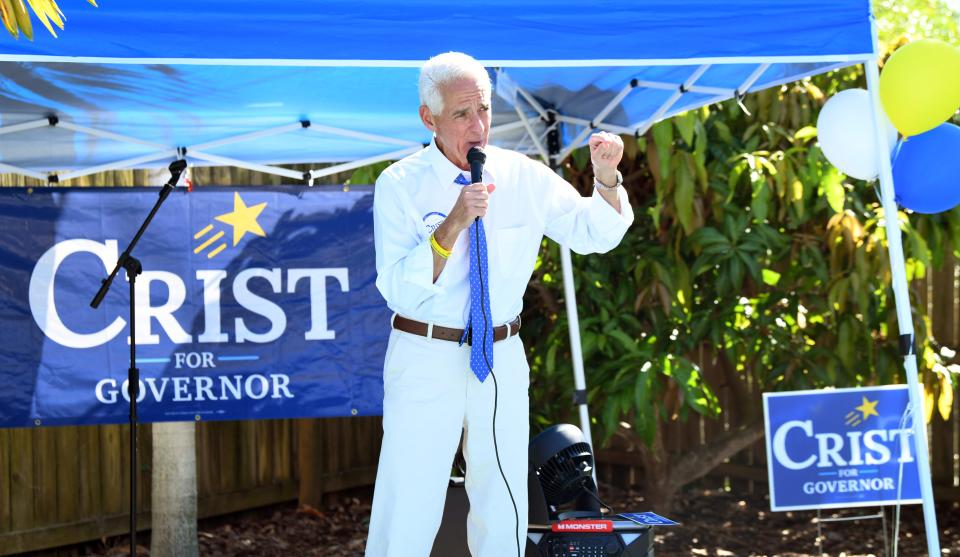Guest opinion: Charlie Crist's land purchase proposal provides much needed balance
- Oops!Something went wrong.Please try again later.
The future of Florida’s tourism and real estate based economy and environment relies on elected officials that have the integrity, vision and values to represent the public interest over self-serving special interests.
Gubernatorial candidate Charlie Crist’s recent proposal to purchase land in the Everglades Agricultural Area (EAA) south of Lake Okeechobee to restore critical water flow south to the Everglades and Florida Bay would be a monumental step forward to enhance the management of the Lake Okeechobee watershed.
The insidious mismanagement of Lake Okeechobee for water supply and drainage for the approximately 440,000 acres of sugar cane fields south of the lake results in destructive algae blooms downstream that is harmful to people, fish and wildlife. The replumbing of the Lake Okeechobee watershed for the benefit of Big Sugar prevents critical fresh water from flowing south to nourish the Everglades and Florida Bay, recharge ground water aquifers, attenuate the advancement of salt water intrusion due to sea level rise, and minimize the adverse impact on coastal estuaries.

Gene Adams, Chair of the Florida Ag Coalition, pushed back against the proposal, arguing lands in the EAA are not for sale. “Every acre of farmland lost from active production takes safe, sustainable and locally grown food out of the mouths of millions of American families”.
Adams statement does not even pass the straight face test as Crist is only referring to sugar cane fields, not food crops including fresh fruits and vegetables. To my knowledge, sugar is an additive not an essential food item.
Adam’s further states that land needed for restoration projects in the EAA has already been purchased and construction has already started for the majority of those projects.”
In fact, the the water storage capacity in the C-43, C-44 and EAA reservoirs are insufficient to handle maximum flows from Lake Okeechobee.
In reality, a review of the water budget of the Lake Okeechobee watershed including inflow, outflow and historical average rainfall reveals a critical need for storage and treatment of an additional one million acre-feet (approximately 325 Billion gallons) of excessive polluted water released from Lake Okeechobee.
Restoration of the historic southern flow-way from Lake Okeechobee to the Everglades in the form of a continuous shallow water conveyance or interconnecting reservoirs and storm water treatment areas would be the most cost effective and efficient means of providing storage and treatment of water released from Lake Okeechobee, providing conservation of precious water supplies during times of drought and mitigate harmful discharge downstream to coastal estuaries.
Approximately, 50,000 acres of sugar cane fields ( 7% of lands in the EAA) south of the lake needs to be purchased and placed in the public domain for storage and treatment of water runoff from Lake Okeechobee. Money for the land purchase is available from the Amendment 1 Conservation Funds approved by Florida voters in 2014.
Crist’s plan to purchase a nominal amount of sugar cane fields in the EAA to “ get the water right” would provide a balance between sustainable agriculture and the opportunity to restore the Everglades and coastal estuaries.
This article originally appeared on Fort Myers News-Press: Charlie Crist's land purchase proposal provides much needed balance
